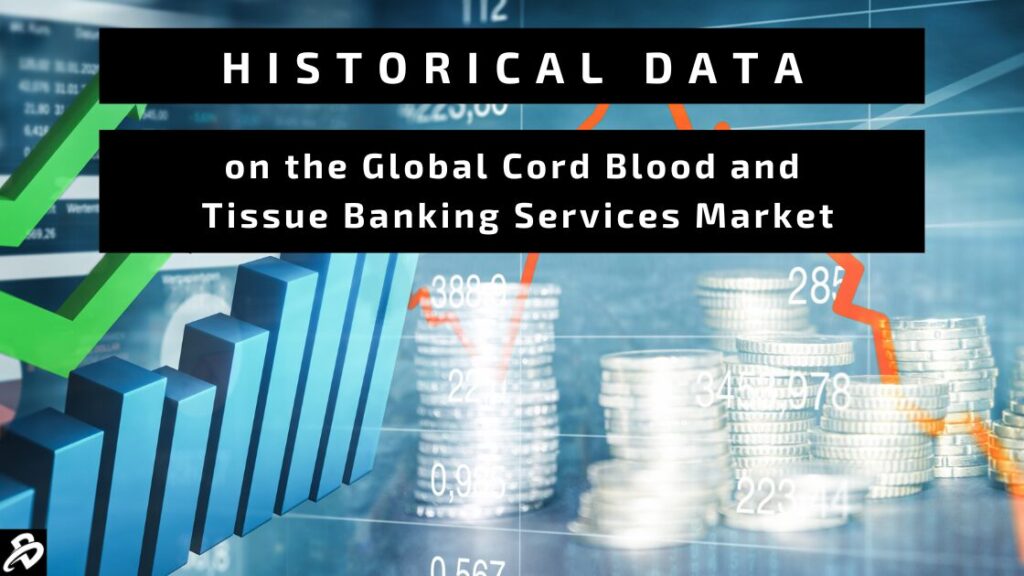The Global Cord Blood and Tissue Banking Services Market is composed of revenue produced by companies that are engaged with the collection, processing, storage, and release of umbilical cord blood and tissue products. The global cord blood industry came into existence in the early 1990’s with the formation of a handful of cord blood banks within the United States. Shortly thereafter, these companies began being established in other regions as well.
By the mid-2000s, the market had grown exponentially and there were cord blood banks in every major healthcare market worldwide. At its peak, the Global Cord Blood and Tissue Banking Services Market consisted of nearly 450 cord blood banks operating worldwide.
While the industry was lucky to have experienced over 15 years of positive market growth during its developmental stages, 2008 and 2009 saw the Global Cord Blood and Tissue Banking Services Market consolidate for the first time. During these years, global revenues within the industry declined as the housing crisis hit the U.S. and the Great Financial Crisis (GFC) got fully underway. The global financial crisis (GFC) describes the difficult economic period that hit global financial markets and the banking systems from mid-2007 to early 2009.
Thankfully, by 2010, the Global Cord Blood and Tissue Banking Services Market was recovering and experiencing slow, but positive, growth. The market recovered from the period of 2011 to 2019, a period during which it enjoyed low- to mid-single-digit growth. This steady market growth continued until early 2020 when the pandemic hit global markets.
Unfortunately, the economic impact of the shutdowns caused 2020 to be the third time in the history that global revenues for the Global Cord Blood and Tissue Banking Services Market declined on a year-over-year basis.
Other Trends in Cord Blood Banking Services
In another interesting trend, the number of cord blood units utilized for hematopoietic stem cell transplantation (HSCT) sharply increased from 2000 to 2013. Of course, cord blood banks were proliferating in the U.S. and worldwide during this era as well. During this period, a growing number of clinicians started using cord blood-derived HSCs, as these cells are naïve and have low immunogenicity compared to HSCs derived from bone marrow and peripheral blood. The public also heard a great deal about cord blood banking during this time, which supported industry growth.
Unfortunately, utilization of UCB-HSCs for transplantation started declining from 2013 onward, which is not a favorable force for the industry.
As a confounding factor, the period of 2013 to 2024 began era of market consolidation. During this time period, larger companies were buying up smaller and mid-sized companies to improve their economies of scale. Today, the vast majority of the global cord blood market is controlled by the world’s ten largest cord blood banking operators. Industry consolidation has been particularly profound within Europe (led by Famicord Group and other large operators), Latin America (consolidated by Cryoholdco), Asia (led by Sanpower Group), and to a lesser degree, the United States. Within the U.S., CooperSurgical owns Cord Blood Registry for a total of at least 1.1 million units under management.
Also, cord tissue banking was first introduced as a service in 2008 in Asia and 2010 in the United States, which meant that from those dates onward, two types of stem cell units were able to be preserved for a single newborn. This had the positive effect of increasing the average sale price per transaction at cord blood banks, particularly within the U.S. market.
Of course, one of the most prominent trends within the global cord blood banking industry is the pairing of cord blood and tissue storage with additional genetic services, to include pre- and post-natal genetic testing, genome sequencing, and metabolic screening tests. The rise of this trend is driven by the ability of cord blood banks to offer complimentary services to existing clients, thereby expanding and diversifying their product portfolio.
As one cord blood executive explained to us, “We are expanding the relationship with the mother.”
Cord blood banks are also becoming diversified stem cell banks, providing storage services for multiple types of perinatal tissues including cord blood, cord tissue, placental, and amnion. Many cord blood banks are diversifying into the storage of adult stem cell types as well, such as dental pulp stem cells (DPSCs) and adipose-derived stem cells (ADSCs).
To learn more about this fascinating and evolving market sector, view the “Global Cord Blood and Tissue Banking Industry Report – Market Size, Segmentation, & Forecasts, 2024.”
